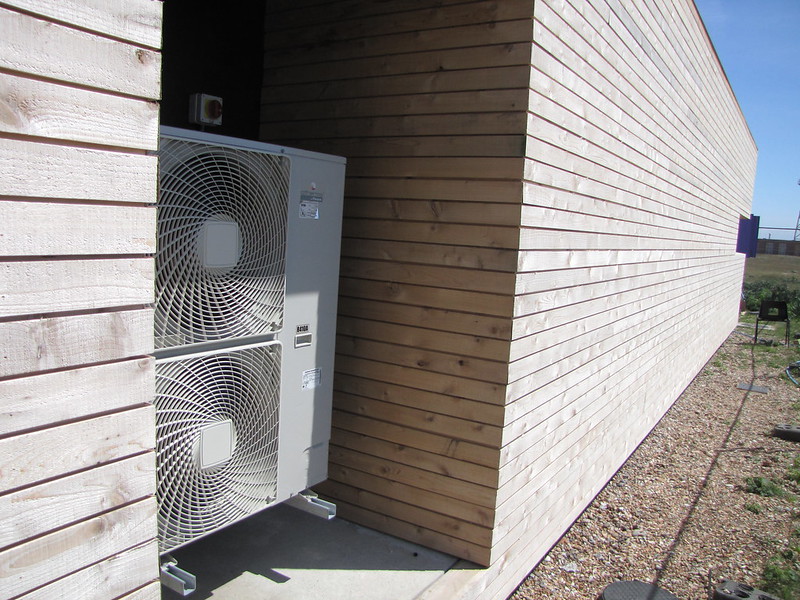Air source heat pumps (ASHPs) are a popular and efficient heating and cooling solution for homes, but the question of whether they require a water tank is a common one. In this comprehensive guide, we’ll delve into the technical details and provide a hands-on, expert-level understanding of the relationship between ASHPs and water tanks.
Understanding the Role of Water Tanks with Air Source Heat Pumps
Air source heat pumps work by extracting heat from the outside air and transferring it indoors to heat a home. Unlike traditional heating systems like boilers, which can provide hot water on demand, ASHPs deliver heat more slowly and gradually. This means that a water tank is typically required when using an ASHP for domestic hot water purposes.
The water tank serves as a storage vessel, allowing the ASHP to gradually heat the water to the desired temperature over time. This ensures that the home has a reliable supply of hot water, even during periods of high demand.
Heating-Only vs. Heating and Hot Water Systems
When an ASHP is used solely for heating purposes, a water tank may not be necessary. In these cases, the ASHP can be integrated with a separate hot water system, such as a traditional boiler or furnace, to provide the necessary hot water.
However, if the ASHP is also responsible for providing domestic hot water, either in addition to or instead of heating, a water tank becomes a crucial component. The water tank allows the ASHP to gradually heat the water to the desired temperature, ensuring a reliable supply of hot water for the home.
Technical Specifications and Considerations
When selecting a water tank for use with an ASHP, there are several technical specifications and considerations to keep in mind:
Tank Size
The size of the water tank should be carefully chosen based on the hot water demands of the household. Factors such as the number of occupants, the frequency of hot water usage, and the desired temperature range should all be taken into account when determining the appropriate tank size.
Tank Material
Water tanks can be constructed from a variety of materials, including stainless steel, enameled steel, and polymer-lined steel. The choice of material will depend on factors such as durability, corrosion resistance, and compatibility with the ASHP system.
Insulation
Proper insulation of the water tank is crucial to minimize heat loss and maintain the desired water temperature. The tank should be well-insulated to ensure efficient operation and minimize energy consumption.
Heating Element
Some water tanks may include an integrated heating element, which can be used in conjunction with the ASHP to provide additional heating capacity or to maintain the water temperature during periods of high demand.
Connectivity and Controls
The water tank should be seamlessly integrated with the ASHP system, with clear communication and control mechanisms to ensure optimal performance and energy efficiency.
Installation and Maintenance Considerations
Proper installation and ongoing maintenance of the ASHP and water tank system are essential for ensuring reliable and efficient operation. This includes:
- Careful placement and positioning of the ASHP and water tank to optimize airflow and accessibility.
- Proper insulation and sealing of all connections to minimize heat loss and energy waste.
- Regular maintenance and cleaning of the ASHP and water tank components to maintain optimal performance.
- Monitoring and adjusting the system settings to ensure the desired water temperature and energy efficiency.
Hybrid Systems and Alternative Approaches
In some cases, a hybrid system approach may be used, where the ASHP is responsible for heating the home, while a separate, more traditional hot water system (such as a boiler or furnace) provides the domestic hot water. This can be a viable option for homeowners who want to take advantage of the efficiency of an ASHP for heating while maintaining a separate hot water system.
Additionally, some advanced ASHP systems are designed to provide both heating and hot water without the need for a separate water tank. These “air-to-water” heat pumps are capable of directly heating the water, eliminating the need for a dedicated storage tank.
Conclusion
In summary, air source heat pumps typically require a water tank when used for domestic hot water purposes, either in addition to or instead of heating. The water tank allows the ASHP to gradually heat the water to the desired temperature, ensuring a reliable supply of hot water for the home.
By understanding the technical specifications, installation requirements, and maintenance considerations, homeowners and HVAC professionals can ensure that their ASHP and water tank system operates efficiently and reliably, providing a comfortable and energy-efficient heating and hot water solution.

